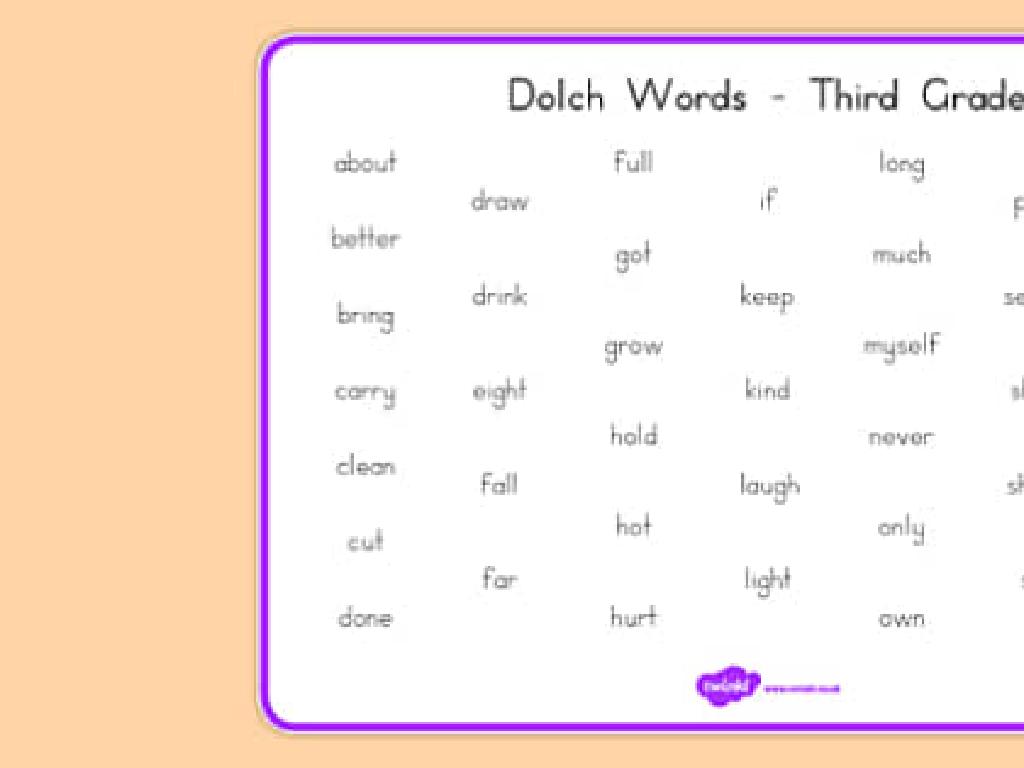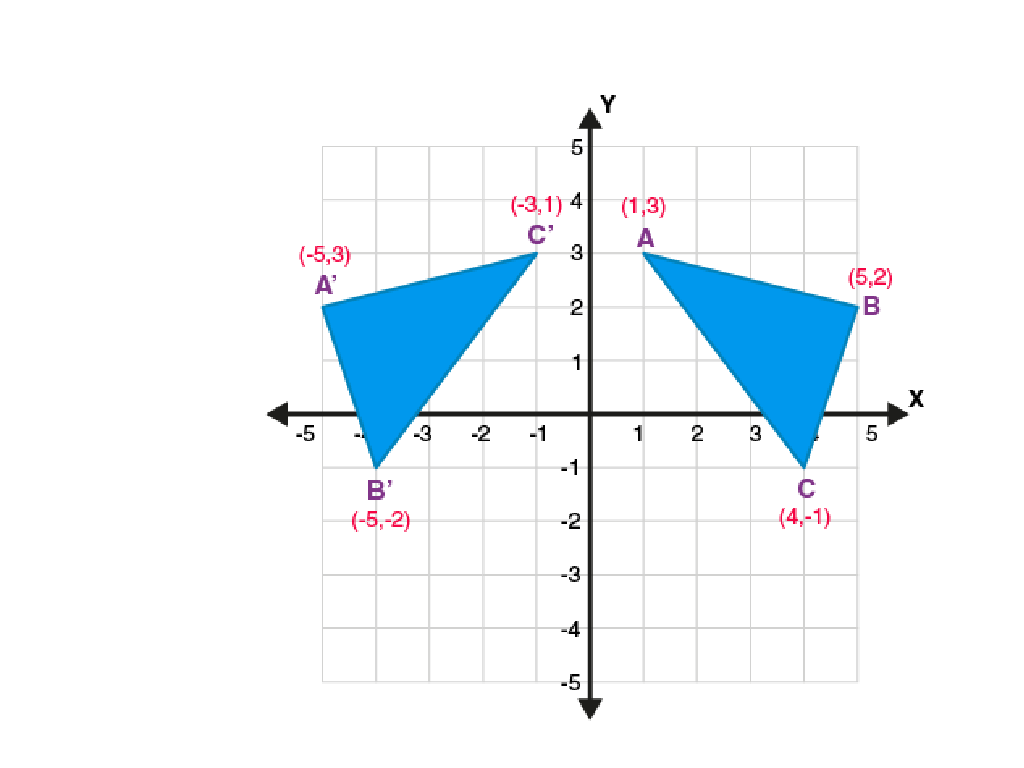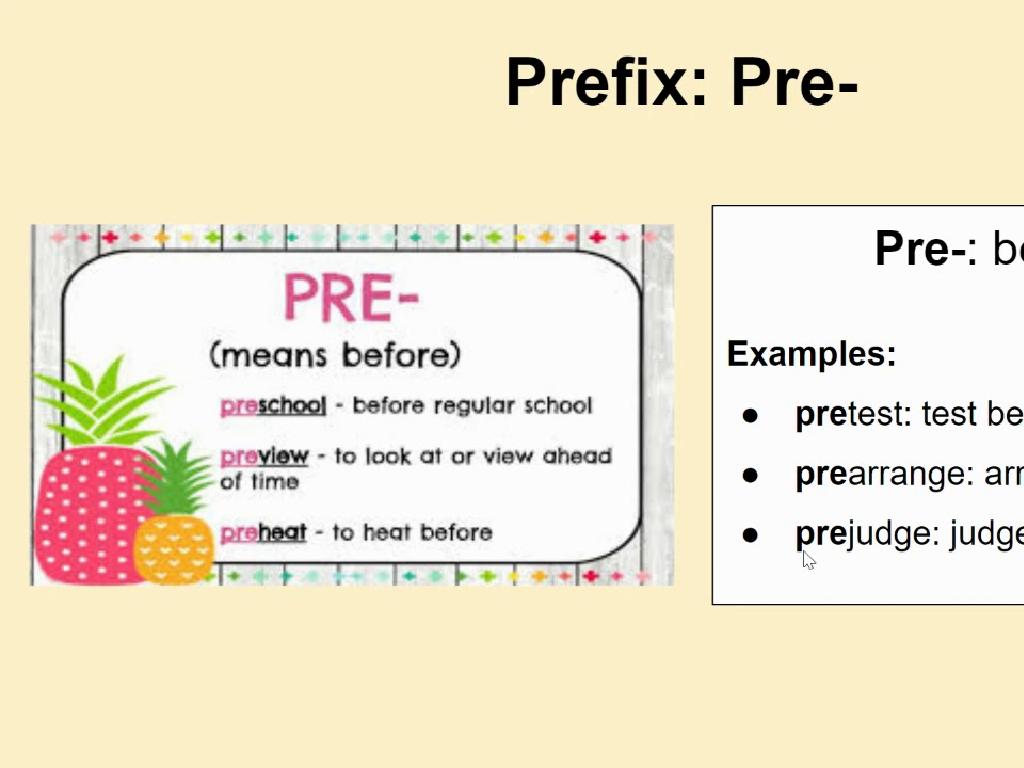Write Powers Of Ten With Exponents
Subject: Math
Grade: Sixth grade
Topic: Exponents
Please LOG IN to download the presentation. Access is available to registered users only.
View More Content
Introduction to Exponents
– Exponents represent repeated multiplication
– For example, 10^3 means 10 x 10 x 10
– Exponents as a multiplication shortcut
– Instead of writing 10 x 10, we use 10^2
– Exponential growth in real life
– Populations and savings can grow exponentially
– Practice with powers of ten
– Let’s calculate 10^1, 10^2, 10^3, and beyond
|
This slide introduces the concept of exponents to sixth-grade students, explaining how exponents are used to represent repeated multiplication. It’s crucial to emphasize that exponents are not just numbers, but they are a way to simplify long multiplication. Provide real-life examples such as population growth or interest in a bank account to illustrate exponential growth. Encourage students to think of exponents as a shortcut and to practice writing powers of ten with exponents to solidify their understanding. The practice problems can include calculating and comparing different powers of ten to help students visualize the concept.
Understanding Powers of Ten
– Define ‘powers of ten’
– Powers of ten: 10 raised to an exponent, like 10^2 for 100.
– Explore the pattern in tens
– Multiplying tens forms a pattern: 10 x 10 = 10^2, 10 x 10 x 10 = 10^3, etc.
– Relate exponents to zeros
– The exponent shows how many times to use 10 in a multiplication.
– Practice with examples
– Let’s try 10^3 = 1,000 and 10^4 = 10,000 together.
|
Begin by defining ‘powers of ten’ and ensure students understand that it’s a way to write repeated multiplication of ten. Show the pattern that emerges when multiplying tens together, and how it simplifies writing large numbers. Highlight that the exponent indicates the number of zeros in the number when written in standard form. Provide examples like 10^2 equals 100, which has two zeros, to solidify the concept. Encourage students to write out powers of ten and count the zeros to see the relationship directly. This will prepare them for more complex operations with exponents in future lessons.
Writing Powers of Ten with Exponents
– Understanding 10 to the power of n
– 10^n means 10 multiplied by itself n times
– Examples: 10^1, 10^2, 10^3
– 10^1 = 10, 10^2 = 100, 10^3 = 1000
– Exponent’s role in value
– As the exponent increases, the value grows exponentially
– Practice with different exponents
– Try writing 10^4, 10^5, and 10^6 and see the pattern
|
This slide introduces students to the concept of writing powers of ten using exponents. Start by explaining that ’10 to the power of n’ means 10 multiplied by itself ‘n’ number of times. Provide clear examples, starting with smaller exponents to show the pattern. Emphasize how the value increases exponentially as the exponent rises. Encourage students to practice with different exponents to become comfortable with the concept. This foundational understanding will help them grasp more complex topics in exponents later on.
Using Exponents in Calculations
– Multiply powers of ten
– To multiply, add the exponents: 10^3 × 10^2 = 10^(3+2)
– Divide powers of ten
– To divide, subtract the exponents: 10^5 ÷ 10^2 = 10^(5-2)
– Simplify expressions with exponents
– Use rules to combine exponents for simpler form
– Base number significance
– Base number tells what number is being multiplied
|
This slide introduces students to the use of exponents in mathematical calculations involving powers of ten. Emphasize the rules for multiplying (adding exponents) and dividing (subtracting exponents) powers of ten. Show how expressions can be simplified by applying these rules, making calculations easier. Highlight the importance of the base number, which remains constant; it’s the exponent that changes to reflect the number of times the base is used as a factor. Provide examples and practice problems to reinforce these concepts. Encourage students to remember these rules as they will greatly simplify working with large and small numbers in future math problems.
Class Activity: Exploring Powers of Ten
– Group activity: Build a ‘Power of Ten’ tower
– Each group represents different powers of ten
– Use blocks or cards to visualize 10^1, 10^2, 10^3, etc.
– Share findings with the class
– Discuss observed patterns
– Look for patterns in the tower heights and number of blocks
|
This interactive group activity is designed to help students understand the concept of powers of ten through a hands-on experience. Divide the class into small groups and provide each group with blocks or cards. Each block/card can represent a power of ten, and students will stack them to build a ‘Power of Ten’ tower. For example, one block could represent 10^1 (ten), two blocks for 10^2 (one hundred), and so on. After the activity, each group will share their towers and discuss the patterns they observed, such as how each level of the tower is ten times taller than the previous one. This visual and physical representation will help solidify their understanding of exponents as they relate to powers of ten. The teacher should circulate to guide the groups, ensure participation, and facilitate the discussion afterward. Possible variations of the activity could include using different colored blocks for each power or challenging students to predict the height of the next power before building it.
Exponent Practice: Powers of Ten
– Work on practice problems individually
– Apply knowledge to solve exponent questions
– Use the rule 10^n to write powers of ten with exponents
– Review peers’ work for accuracy
– Exchange notebooks and check if answers follow the exponent rules
– Discuss solutions and strategies
– Share different methods used to find the correct answers
|
This slide is focused on reinforcing the students’ understanding of writing powers of ten with exponents through practice problems. Students should work individually on a set of problems designed to apply their knowledge of exponents. After completing the problems, they will engage in a peer review process to check each other’s work, which encourages collaboration and helps them learn from their peers’ approaches. The teacher should facilitate a discussion afterward to address any common mistakes and to highlight various strategies used by students. This activity not only solidifies their grasp of the concept but also promotes critical thinking and peer learning.
Conclusion: Powers of Ten with Exponents
– Recap of exponent concepts
– Exponents represent repeated multiplication
– Significance of exponents in math
– Understanding exponents is crucial for advanced math topics
– Introduction to negative exponents
– Negative exponents represent division
– Engage with practice problems
|
As we conclude today’s lesson, it’s important to review the key concepts of writing powers of ten with exponents. Emphasize that exponents are a shorthand for expressing repeated multiplication, which is a fundamental skill in mathematics. Highlight the importance of understanding exponents as they are widely used in various fields, including science, finance, and technology. Introduce the concept of negative exponents, which we will explore in the next lesson, as a way to represent division or inverses of numbers. Encourage students to solve a few practice problems to solidify their understanding of today’s lesson and prepare them for the upcoming topic.
Exit Ticket: Powers of Ten with Exponents
– Share one learning from today
– Ask a question you still have
– Submit your exit ticket
– Write your thoughts on a piece of paper
– Reflect on today’s lesson
– Think about how exponents simplify writing large numbers
|
The exit ticket is a quick wrap-up activity to assess student understanding and to gather feedback on their learning experience. It’s crucial to encourage students to genuinely reflect on what they’ve learned about writing powers of ten with exponents. Remind them that no question is too small and that their inquiries help guide future lessons. Collecting the exit tickets will also provide insight into the students’ grasp of the concept and identify any areas that may need further clarification. This feedback will be valuable for planning subsequent lessons and ensuring that all students are comfortable with using exponents to represent powers of ten.





